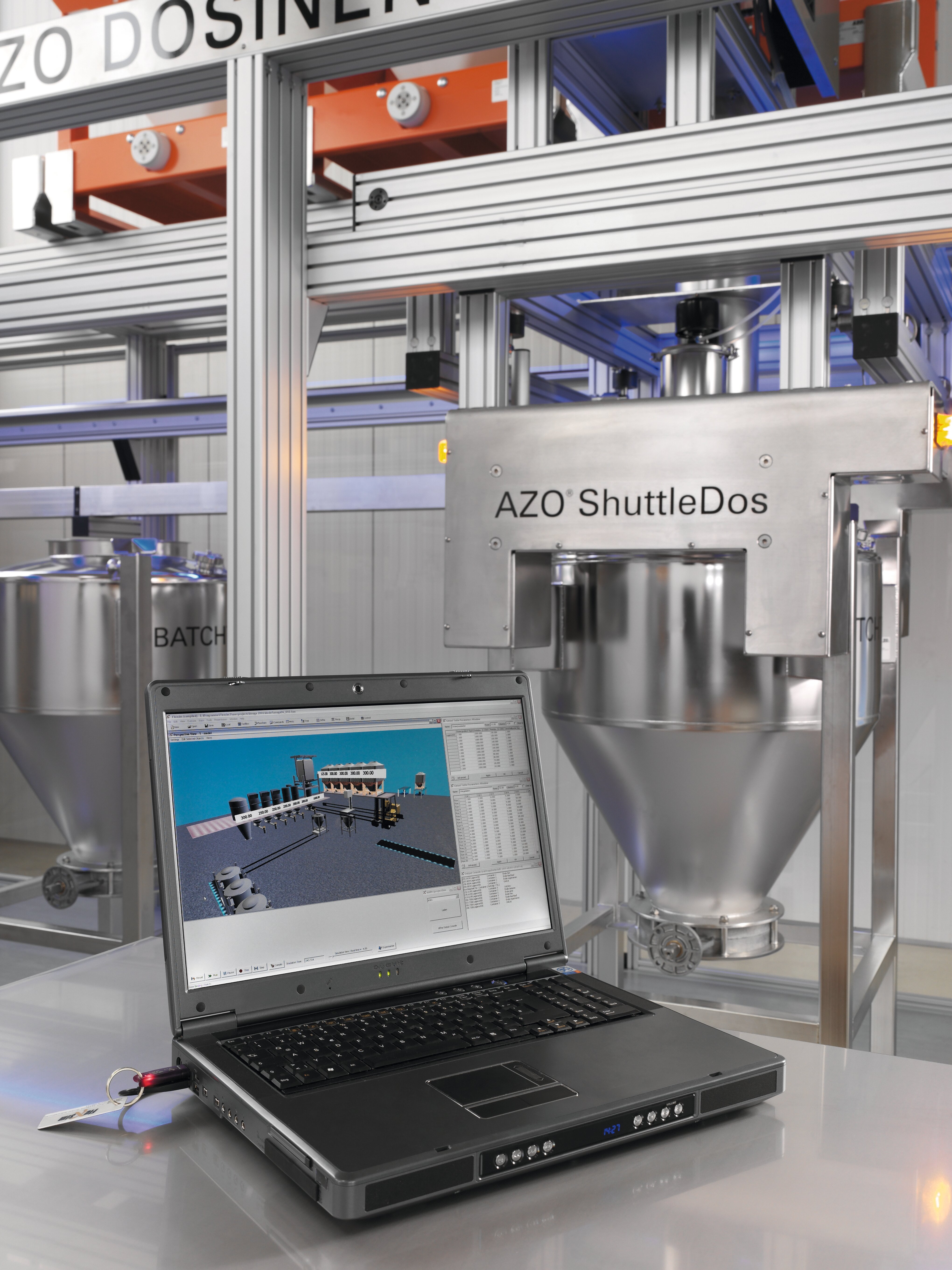Preferred applications
An actual plant equipped with AZO ShuttleDos® systems requires complex analysis during the design phase to verify the specified output ratings.
An obvious solution is to accompany plant design with simulation. The versatile configurability of the simulation model makes it possible to respond flexibly to changes.
For instance, it is possible to modify the number of shuttle units, travel ranges, types of screw, recipe data etc. and then immediately observe the effects on the simulation model.
Function
The graphic 3D visualisation of the simulation model sheds light on the often unclear dynamic characteristics of the overall system.
Orders and recipes specified by the customer in advance are stored in the system to provide an initial visual impression of the future operational blueprint and characteristics of the plant.
In addition to making any bottlenecks clearly apparent this procedure also effectively pinpoints unutilised parts of the plant.
Experimenting with the number of shuttle units or changing the recipe sequence is also made immediately visible in the plant dynamics.
Forecasts relating to achievable plant output, utilisation capacities, statistical evaluations, material provision recommendations, necessary plant equipment (number of mixers, number of shuttle unit, etc.) no longer need to be assumed but rather they can be considered as fact within the framework of the applied model accuracy.
This guarantees complete confidence in the plant from the very outset.
The simulation results make it possible to make decisions in terms of design measures, optimisation, saving options etc. in advance.
By observing the simulation model, the customer can experience the future, as even in the planning stage he can see how his orders and recipes will materialise.
The simulation model can already answer a host of questions. The dynamic 3D model provides clear understanding of the plant behaviour such as in the initial startup period and during regular production, changes to recipes, as well as in specifically selected best-case and worst-case scenarios.
